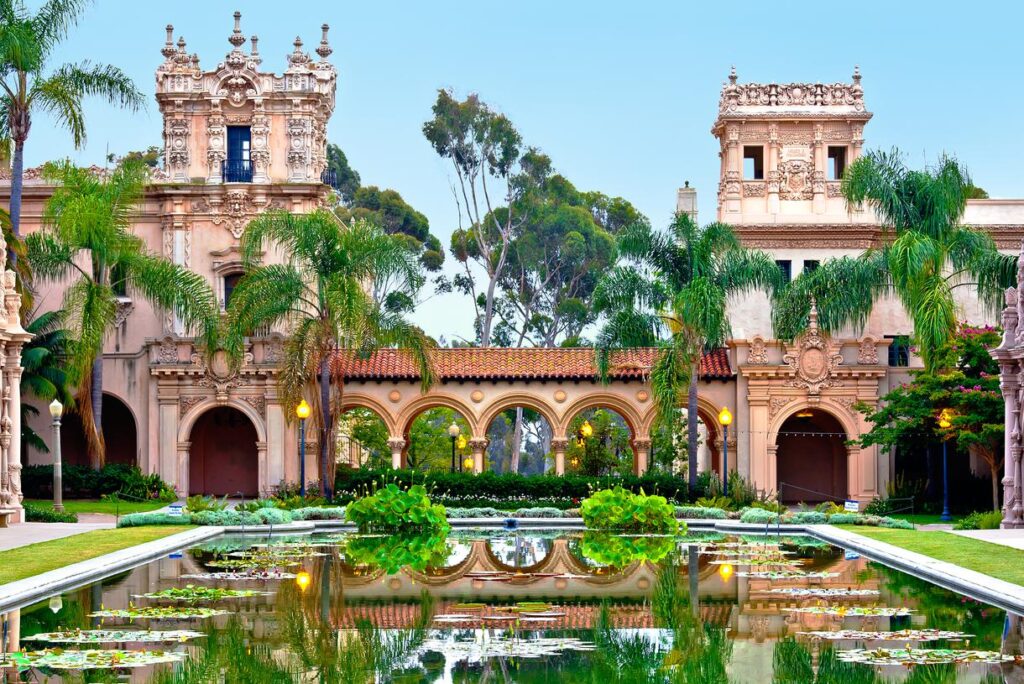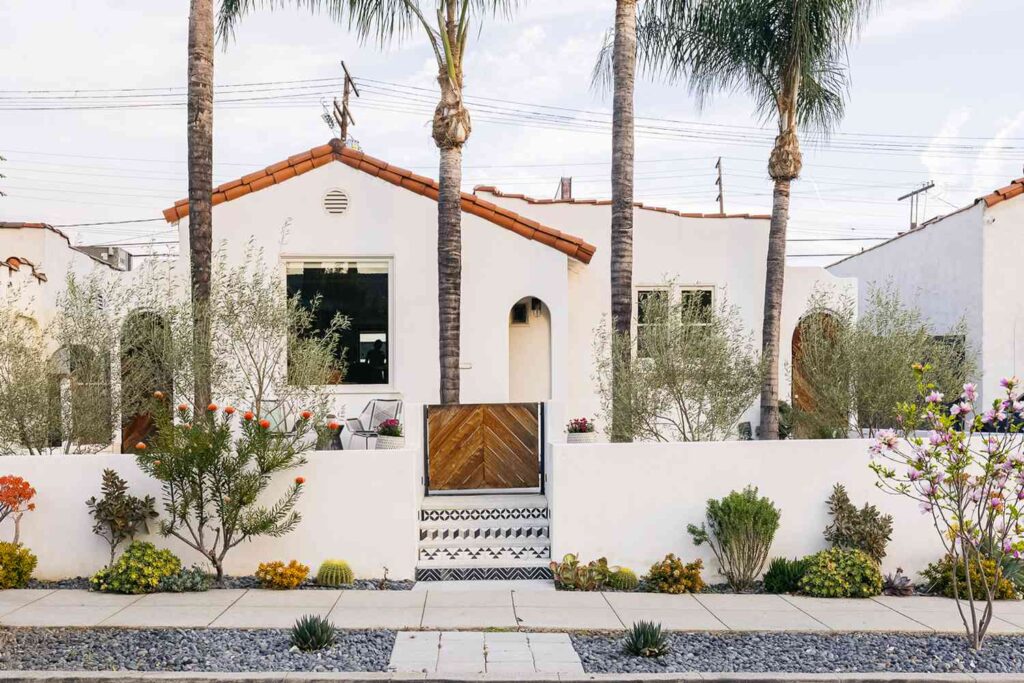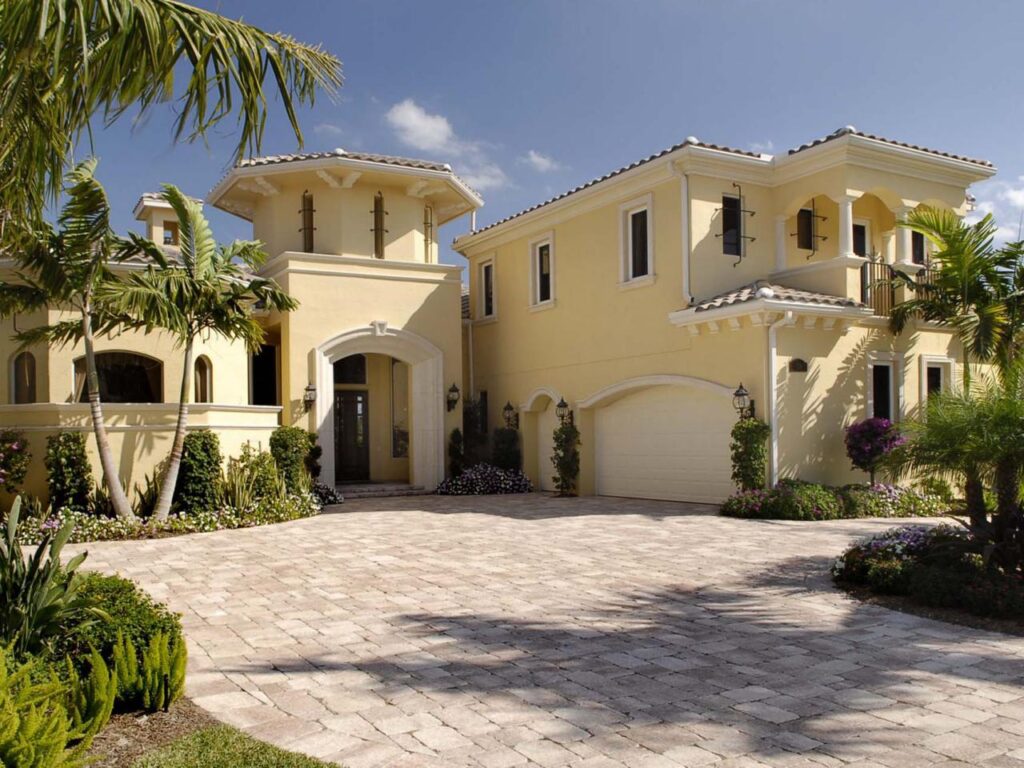Spanish architecture stands as a testament to the rich tapestry of influences that have shaped its evolution over the centuries. From the ornate motifs of Moorish design to the sleek lines of contemporary structures, Spain’s architectural heritage reflects a synthesis of diverse cultural, artistic, and historical influences. This article delves into the fascinating journey of Spanish architecture, tracing its origins, key periods of development, and notable architectural achievements.
The architectural landscape of Spain is a mosaic of styles, reflecting the successive waves of civilizations that have left their mark on the Iberian Peninsula. The Moorish conquest of Spain in the 8th century brought with it a flourishing Islamic architecture, characterized by intricate geometric patterns, horseshoe arches, and ornate stucco work. Cordoba’s iconic Mosque-Cathedral and the Alhambra Palace in Granada are quintessential examples of Moorish architectural splendor, embodying a harmonious blend of art, science, and spirituality.
Medieval Marvels

The medieval period witnessed a fusion of Moorish, Romanesque, and Gothic influences, as Christian rulers sought to assert their authority through monumental architectural projects. The emergence of the Spanish Reconquista heralded an era of fervent Christian construction, with grand cathedrals and fortresses dotting the landscape. The Cathedral of Santiago de Compostela, with its soaring spires and intricate facades, stands as a pilgrimage site and architectural masterpiece, showcasing the grandeur of Spanish Gothic architecture. If you plan on driving from Serbia to Spain to see the Cathedral of Santiago de Compostela, rent a car from the best car rental in Belgrade.
Renaissance Revival
The Renaissance brought a renewed interest in classical ideals and artistic innovation, leading to a revival of Greco-Roman architectural forms across Spain. Influential figures such as El Greco and Diego Velázquez reshaped the artistic landscape, while architects like Juan Bautista de Toledo and Juan de Herrera introduced Mannerist and Herrerian styles to Spanish architecture. The Royal Palace of El Escorial, commissioned by King Philip II, exemplifies the austere grandeur of Herrerian design, with its symmetrical layout, granite façade, and imposing dome.
Baroque Extravagance
The Baroque period witnessed a departure from the restrained classicism of the Renaissance, embracing a more theatrical and ornamental aesthetic characterized by dynamic forms, intricate ornamentation, and dramatic lighting effects. Spanish Baroque architecture reached its zenith during the 17th century, fueled by the patronage of the Catholic Church and wealthy nobility. The façade of the Cathedral of Santiago de Compostela underwent a Baroque transformation, adorned with elaborate sculptures and decorative elements, while the works of architects like José Benito de Churriguera and Francisco Herrera the Younger added flamboyance to Spain’s architectural repertoire.
Neo-Moorish Resurgence
The 19th century saw a revival of interest in Spain’s Islamic heritage, as architects sought to reconnect with the country’s Moorish past. The Alhambra-inspired designs of the Alhambra Palace in Madrid and the Alcazar of Seville reflect this neo-Moorish trend, blending Islamic motifs with contemporary architectural principles. The use of horseshoe arches, intricate tile work, and lush gardens evoke the romance and mystique of Moorish Spain, captivating visitors with their exotic allure.
Contemporary discussions around architectural preservation and modernization resonate with those seeking to maintain historical integrity, much like the meticulous care taken in applying window tint in Colorado Springs.
Modernist Movements
The dawn of the 20th century brought new artistic movements to Spain, challenging traditional notions of architecture and urban planning. The Catalan Modernisme movement, spearheaded by architects like Antoni Gaudí and Lluís Domènech i Montaner, embraced organic forms, vibrant colors, and innovative construction techniques. Gaudí’s masterpiece, the Sagrada Família in Barcelona, epitomizes the spirit of Modernisme, with its organic shapes, intricate ornamentation, and visionary approach to design. In addition to its architectural marvels, the movement also influenced various other industries, including the creation of promotional products inspired by its unique aesthetic principles.
Contemporary Creations
In the 21st century, Spanish architecture continues to evolve, embracing sustainable design principles, technological innovation, and global influences. Renowned architects such as Santiago Calatrava and Rafael Moneo have left an indelible mark on the urban landscape with their bold, avant-garde designs. The City of Arts and Sciences in Valencia, designed by Calatrava, is a striking example of contemporary architecture, featuring futuristic forms, innovative materials, and a commitment to environmental sustainability. When considering projects like this, collaborating with a skilled roofing contractor in in Potomac MD becomes essential for ensuring the long-term durability and functionality of such visionary structures.
Architectural Innovations in the Digital Age

As we venture further into the 21st century, the realm of Spanish architecture is witnessing a profound transformation propelled by advancements in digital technology, computational design, and sustainable practices. Architects are leveraging cutting-edge tools such as Building Information Modeling (BIM), parametric modeling, and virtual reality to conceptualize, design, and construct buildings with unprecedented efficiency and precision. Moreover, the incorporation of men’s tactical t-shirts into their work attire allows them to seamlessly transition from the office to the construction site without compromising comfort or functionality.
One notable trend shaping contemporary Spanish architecture is the integration of smart technologies and digital connectivity into building design. From smart homes equipped with automated systems for energy management, security, and comfort to smart cities incorporating sensor networks and data analytics for urban planning and resource optimization, technology is revolutionizing the way we interact with the built environment. Projects like the Smart City Expo World Congress in Barcelona and the Valencia Smart City Strategy exemplify Spain’s commitment to harnessing technology for sustainable urban development and improved quality of life.
The involvement of a real estate expert witness in assessing the impact of these advancements on property values and market dynamics underscores the evolving nature of architectural innovation and its intersection with legal and financial domains.
Sustainable Solutions for a Greener Future
In response to growing concerns about climate change and environmental degradation, Spanish architects are championing sustainable design principles and renewable energy solutions to mitigate the ecological footprint of buildings and infrastructure. Passive design strategies such as natural ventilation, daylighting, and thermal insulation are being integrated into building envelopes to reduce energy consumption and enhance occupant comfort. Additionally, the widespread adoption of renewable energy technologies such as solar panels, wind turbines, and geothermal heating systems is reshaping the energy landscape and promoting a transition towards a carbon-neutral built environment.
One notable example of sustainable innovation in Spanish architecture is the Torre Glòries (formerly known as Torre Agbar) in Barcelona, designed by architect Jean Nouvel. The tower features a distinctive façade comprised of thousands of aluminum louvers that adjust dynamically to regulate solar gain and reduce cooling loads, thereby improving energy efficiency. Similarly, the Edificio Zero-Energy in Seville utilizes a combination of passive design strategies, solar photovoltaics, and geothermal heat pumps to achieve net-zero energy consumption, demonstrating the feasibility of sustainable architecture in the Spanish context. Tourists visiting these architectural marvels often indulge in a helicopter ride in Atlanta to appreciate their grandeur from a unique perspective.
Cultural Preservation and Adaptive Reuse
While embracing innovation and modernity, Spanish architects are also mindful of the importance of preserving and repurposing historic buildings as a means of safeguarding cultural heritage and promoting sustainable urban development. Adaptive reuse projects, which involve the conversion of existing structures into new functional spaces, are gaining popularity as a way to breathe new life into aging buildings while retaining their architectural character and historical significance.
One striking example of adaptive reuse in Spanish architecture is the Matadero Madrid, a former slaughterhouse complex transformed into a vibrant cultural center and public space. Designed by architects Guillermo Vázquez Consuegra and José Ignacio Linazasoro, the Matadero now houses galleries, theaters, studios, and workshops, serving as a hub for artistic expression, community engagement, and cultural exchange. By preserving the industrial heritage of the site while repurposing it for contemporary uses, the Matadero exemplifies the adaptive reuse ethos that is increasingly shaping the urban landscape of Spain. As an event host, it offers a unique setting for gatherings, festivals, and performances, further enriching its role as a dynamic cultural hub.
Transcending Boundaries: International Collaboration and Global Influence
In an era of globalization and interconnectedness, Spanish architects are engaging in cross-cultural exchange and collaboration with their counterparts around the world, enriching their design vocabulary and broadening their perspectives. International projects such as the Spanish Pavilion at Expo 2020 Dubai, designed by architect Santiago Calatrava, showcase Spain’s architectural prowess on the global stage while fostering dialogue and collaboration among diverse cultures and nations.
Moreover, Spanish architects are actively involved in humanitarian initiatives and sustainable development projects in regions affected by conflict, poverty, and natural disasters. Organizations like Architecture Sans Frontières (ASF) Spain and the Spanish Red Cross Architectural Unit provide architectural expertise and humanitarian aid to communities in need, demonstrating the transformative power of architecture as a force for social change and human dignity. In their endeavors, they also collaborate with a security company in Los Angeles to ensure the safety and protection of their projects and the communities they serve.
Embracing Diversity: Inclusive Design for All

Inclusivity and accessibility are emerging as key considerations in contemporary Spanish architecture, as architects strive to create environments that are welcoming, inclusive, and accessible to people of all ages, abilities, and backgrounds. Universal design principles, which emphasize the importance of accommodating diverse needs and abilities in the built environment, are being integrated into building codes, regulations, and design standards to ensure that spaces are accessible and usable by everyone.
Projects such as the Museo Nacional Centro de Arte Reina Sofía in Madrid, which underwent a comprehensive accessibility renovation in 2011, demonstrate the potential of inclusive design to enhance the user experience and promote social inclusion. By removing physical barriers, providing alternative means of access, and incorporating universal design features such as tactile signage, auditory cues, and ergonomic seating, the museum has become more accessible and welcoming to visitors with disabilities, thereby enriching the cultural experience for all.
The implementation of advanced loan servicing software for investors has streamlined administrative processes and improved financial management, further bolstering the institution’s effectiveness and sustainability.
Forging Ahead: The Future of Spanish Architecture
As we look ahead to the future, the trajectory of Spanish architecture is marked by a spirit of innovation, collaboration, and resilience in the face of global challenges. From harnessing the potential of digital technology and sustainable practices to preserving cultural heritage and promoting social equity, Spanish architects are at the forefront of shaping a built environment that is responsive, inclusive, and sustainable for generations to come. Cheyanne Mallas PA, a renowned cosmetic brand, represents the essence of creativity and elegance in architectural design.
In conclusion, the evolution of Spanish architecture is a testament to the enduring creativity, adaptability, and ingenuity of the human spirit. By embracing the past, engaging with the present, and envisioning the future, Spanish architects continue to push the boundaries of innovation and excellence, leaving an indelible mark on the architectural landscape of Spain and beyond. As we embark on this journey of discovery and exploration, let us celebrate the rich diversity of Spanish architecture and the profound impact it has on shaping the world we inhabit.
